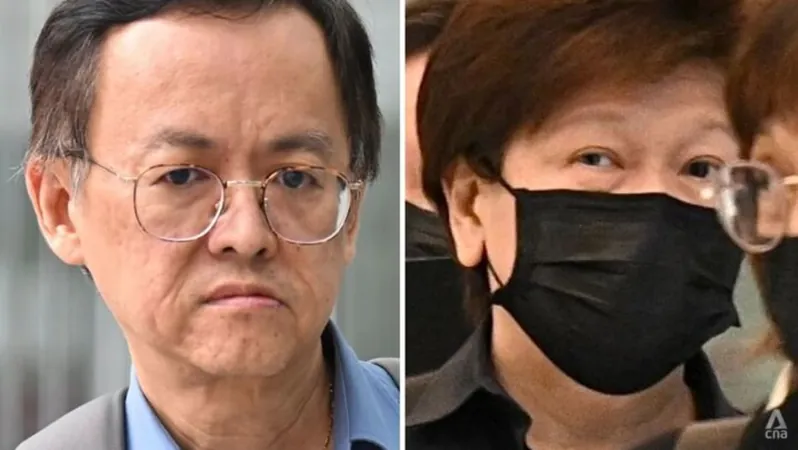
Bombshell in Hyflux Trial: Banks Fear Cashflow Crisis from Tuaspring Project!
2025-09-02
Author: Wei Ling
A Troubled Waters: The Hyflux Saga Unfolds
In a dramatic turn of events at the Hyflux trial, concerns have emerged regarding the financial viability of the Tuaspring Project, particularly its reliance on electricity sales. Prosecutors allege that the company concealed its plan to fund low-priced water sales to Singapore's national water agency, PUB, by generating revenue from its first electricity plant. This risky maneuver backfired when poor electricity sales plunged Hyflux into financial turmoil, resulting in a staggering S$900 million owed to 34,000 investors.
Emails Reveal Banks' Growing Anxiety
During Tuesday's proceedings, Deputy Public Prosecutor Kevin Yong dissected a series of emails and financial documents from 2010 and 2011, shedding light on the banks' apprehensions. One crucial email from November 2010 highlighted the serious risks flagged by six banks approached for funding. Mr. Nah, a witness in the trial, noted that Singapore's fluctuating electricity market, unlike other countries with fixed rates, raised alarm bells among lenders.
Power Plant Cashflow: A Hot Seat Issue for Hyflux
The trial revealed that while banks were initially not overly concerned about revenue from the water aspect of the Tuaspring Project, their primary focus was on the performance of the power plant. If the plant faltered, repayments on the loans would be jeopardized. Mr. Nah emphasized the critical link between the power plant's success and the banks' willingness to disburse loans.
Management Under Scrutiny: Did They Know the Risks?
The courtroom drama intensified as Mr. Nah suggested that senior management, including key figure Lum, were well aware of the banks' apprehensions. An email from December 2010 showed Lum advocating for a comprehensive business strategy presentation to reassure the banks about the project’s sustainability.
Seeking Clarity: Banks Push for Detailed Explanations
In light of growing concerns, DBS Bank sought a meeting with Hyflux representatives to better understand their power strategy. Mr. Nah explained that this inquiry was standard, given the significant role electricity revenue played in the Tuaspring project's financial structure.
The Worst-Case Scenario: A Debt Dilemma
The banks warned that revenue from the water component might only support around S$150 million to S$170 million in debt—considered a worst-case scenario. They demanded clarity on Hyflux’s equity commitments, hinting that the company might need to provide more than the previously planned S$363 million in equity.
The Defense Prepares: What Lies Ahead?
As the trial continues, there is palpable tension as the defense prepares to cross-examine Mr. Nah. Lum and other former Hyflux leaders could face serious ramifications, including potential jail time and hefty fines if found guilty of failing to disclose critical information about the electricity sales.
Climactic Showdown in Court Awaits!
With the courtroom saga gripping the nation, all eyes are on how the proceedings will unfold. Will justice prevail, or will the legal drama unveil deeper secrets buried within Hyflux’s financial strategies?




 Brasil (PT)
Brasil (PT)
 Canada (EN)
Canada (EN)
 Chile (ES)
Chile (ES)
 Česko (CS)
Česko (CS)
 대한민국 (KO)
대한민국 (KO)
 España (ES)
España (ES)
 France (FR)
France (FR)
 Hong Kong (EN)
Hong Kong (EN)
 Italia (IT)
Italia (IT)
 日本 (JA)
日本 (JA)
 Magyarország (HU)
Magyarország (HU)
 Norge (NO)
Norge (NO)
 Polska (PL)
Polska (PL)
 Schweiz (DE)
Schweiz (DE)
 Singapore (EN)
Singapore (EN)
 Sverige (SV)
Sverige (SV)
 Suomi (FI)
Suomi (FI)
 Türkiye (TR)
Türkiye (TR)
 الإمارات العربية المتحدة (AR)
الإمارات العربية المتحدة (AR)